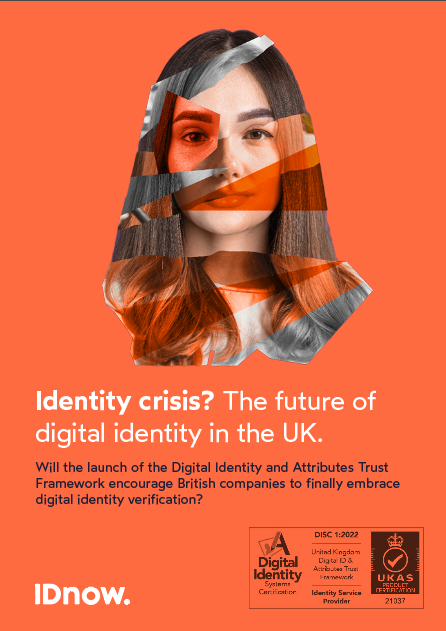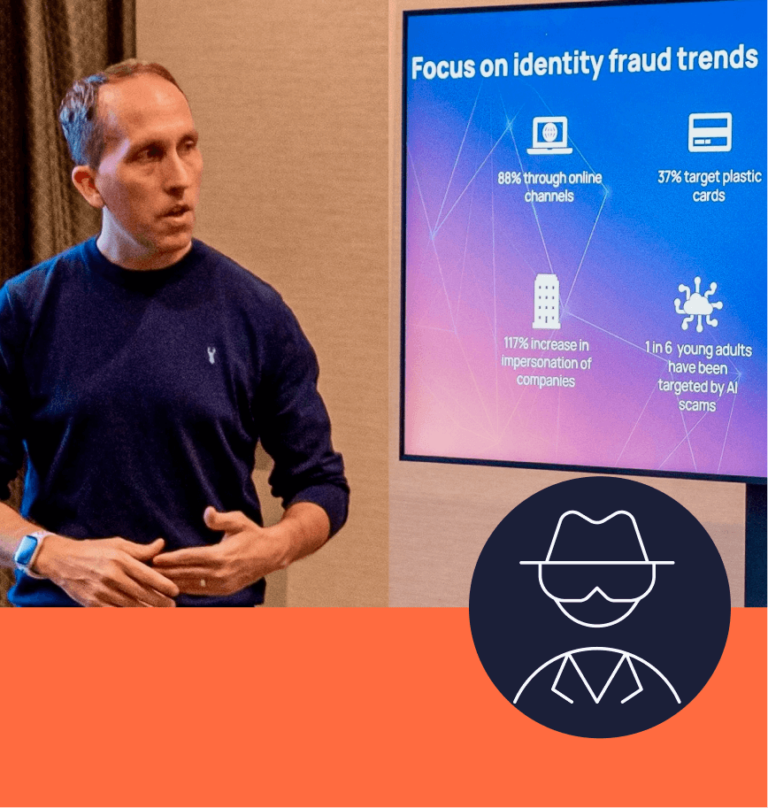Although offering digital services is nothing new for financial services, the pace of adoption increased significantly during the COVID19 pandemic, as did rates in fraud, money laundering, and other types of digital crime.
In the recent IDnow webinar Customer onboarding in banking – the balance between security and UX, experts from IDnow, Ziglu, Santander, and Scotiabank met to discuss digitalization, customer onboarding, and digital identity in banking. In a lively panel discussion, now available to watch On-demand, ideas were exchanged on how to embrace technology to offer the best customer experience whilst also maintaining security and trust.
Growth in digital banking services.
Webinar participants agreed that the use of digital services had increased significantly since the beginning of the pandemic, as had the range of services offered – many of which had not been planned before the pandemic. This resulted in higher levels of customer onboarding and verification services.
As highlighted during the webinar, a study by McKinsey suggests that companies are now seven years ahead in digital transformation due to the pandemic. IDnow revealed it had experienced a growth of up to 1,000% in the demand for identity verification solutions.
Rise in financial crime.
Unfortunately and unsurprisingly, the rise in digitalization has been accompanied by an increase in financial crime. Indeed, at IDnow, we have seen a 180% rise in document fraud.
James Sullivan, Chief Operating Officer at Ziglu agreed with the unfortunate, yet unsurprising turn of events, explaining how over the past 12 months, they had witnessed an increase in fraud, including a significant increase in impersonation fraud, money mule activities, and other types of scams. A lack of digital IDs in the UK was agreed to be a contributing factor. Read more about why this could all be set to change in 2023 in our ‘Why the UK is banking on digital IDs in 2023’ blog.
Building trust is vital for banks.
Data security is paramount for all companies, most importantly for banks as they are the custodians of customers’ personal information and security is the foundation in trust believes Rod Boothby, Global Head of Identity at Santander:
People trust banks as a store of their value. That means things like cash, securities, but also data. They know that banks will protect their data – which is very useful when you are trying to establish trust on the internet.
Rod Boothby, Global Head of Identity at Santander.
Both Rod from Santander and Zemfira Khisaeva from Scotiabank highlighted how building trust online is critical; without it, they are not only risking security, but also potentially losing customers and revenue. Rod explained how post-COVID digital identity approaches are being developed with data minimization in mind, which would enable banks to request less information from customers when performing KYC processes.
ID verification as part of a digital strategy.
The importance of digital identity verification is becoming increasingly clear, especially as the volume of online services and fraud increases. Roger Redfearn-Tyrzyk, Director of Global Gambling & Sales UK at IDnow explained that as industries add new services and functions, they face different challenges, including thinking about new sources for digital identity, embracing new technologies, and ensuring a seamless experience across multiple channels and backend systems.
Roger revealed that a primary driver of changes from a technology verification point of view is how to ensure the person is who they claim to be. Capturing a photograph on an ID is no longer enough. In the near future, there will be a need for more advanced techniques that can authenticate documents, such as use of video techniques for checking dynamic security features and Near Field Communication (NFC) technology. The use of biometrics for face, voice, or fingerprint recognition will continue to be widely used, but the adoption of more robust data protection and security processes will also need to be considered.
Identity crisis? The future of digital IDs in the UK.

Identity standards as a catalyst for trust.
During the webinar, all participants expressed how standards shared between organizations are also important. Zemfira from Scotiabank explained how banks in Canada use the same system to perform verifications. Rod shared how Santander (together with other banks) is working on developing an open ID trust framework for digital identity, which is aimed to standardize the verification approach not only for financial services, but also other industries. Ultimately, this trust framework would allow organizations to onboard customers easily and securely, while enabling the customer to remain in complete control of what data is shared.
Providing identity insurance for banking transactions
Another new development discussed was the introduction of identity insurance. Rod explained how this could greatly help trust and global financial inclusion, claiming that “By transferring the risk we allow people to act as though they are trusted everywhere.”
Importance of the user experience
Security, functionality, and better services are great, but what about the customer experience?
Zemfira pointed out that while customer experience was seen as not as important as security and trust, the focus has changed over the years as new generations become customers, and challenger banks arise. User experience is swiftly moving from a ‘nice to have’ to a key differentiator.
How to achieve a great user onboarding experience
Participants also shared their views on KYC and the onboarding process, and how to make the process positive for users. Main areas of interest include:
- Ensure high speed of customer onboarding, as users can abandon the process if it is too slow. Customers are there to engage with your products and services, so get them doing that as soon as possible.
- Reduce friction points. There is a level of “friendly friction” that customers are prepared to deal with, however it is important to communicate the value of your products and the reason for this ‘friction’ with the customer.
- Aim for a reliable solution: It is also very important to choose the right identity partner, with systems and processes that have been widely tested.
Compliance is both important and challenging
There was a general consensus that the real challenge was meeting regulatory requirements and reducing friction points during onboarding and verification. The art of finding the right balance between the two will therefore be a key differentiator.
For many organizations, the regulatory ecosystem can be cumbersome to navigate as regulatory requirements often differ from one country to another. For example, because of Brexit, UK companies operating in Europe will now need to acquire a license in the countries they wish to operate and comply with local regulations. Another example is a European crypto company that wishes to onboard customers in Germany are required to obtain a license in Germany and comply with BaFin regulations, where a video-based verification is required.
The lack of government digital IDs is also a limiting factor. Countries such as Estonia and Sweden, for example, are significantly further ahead than their European counterparts. Sweden uses BankID to onboard customers, and Estonia is the only country with a digital identity that enables banks to fully onboard customers. On the flip side, the UK is likely to face additional challenges due to their lack of a government identity document. In fact, James from Ziglu believes the UK’s absence of a government identity document is a leading contributor to the UK’s high level of financial crime.
James also raised the point about outsourcing and banks’ regulatory responsibility, citing the growing trend where financial services are relying on third parties to perform their KYC processes. Learn how to balance regulation and customer experience in our blog.
Looking to the future.
Webinar participants agreed that future changes to customer onboarding and digital identity would mostly come through the improvement and development of technology, and reduction of errors in verification and KYC – rather than new developments, per se. For further insights from the experts, watch the full webinar below.
By

Francisco Martins Senior Identity Consultant, Financial Sector UK/I at IDnow Connect with Francisco on LinkedIn.



